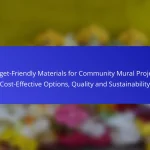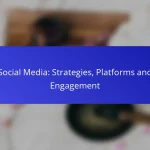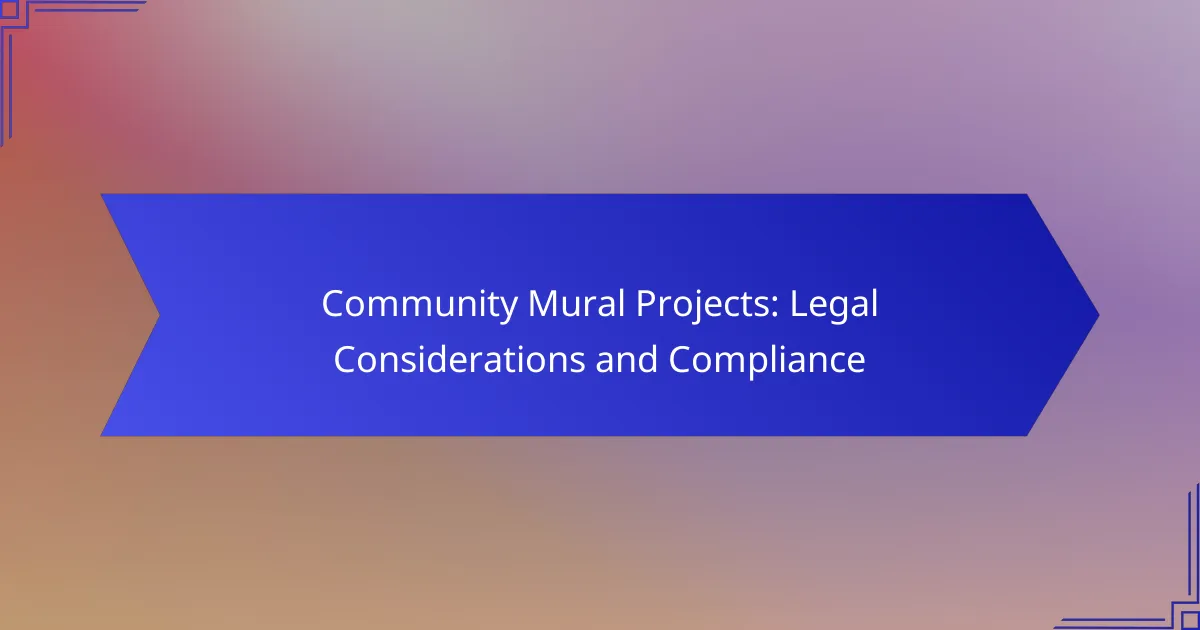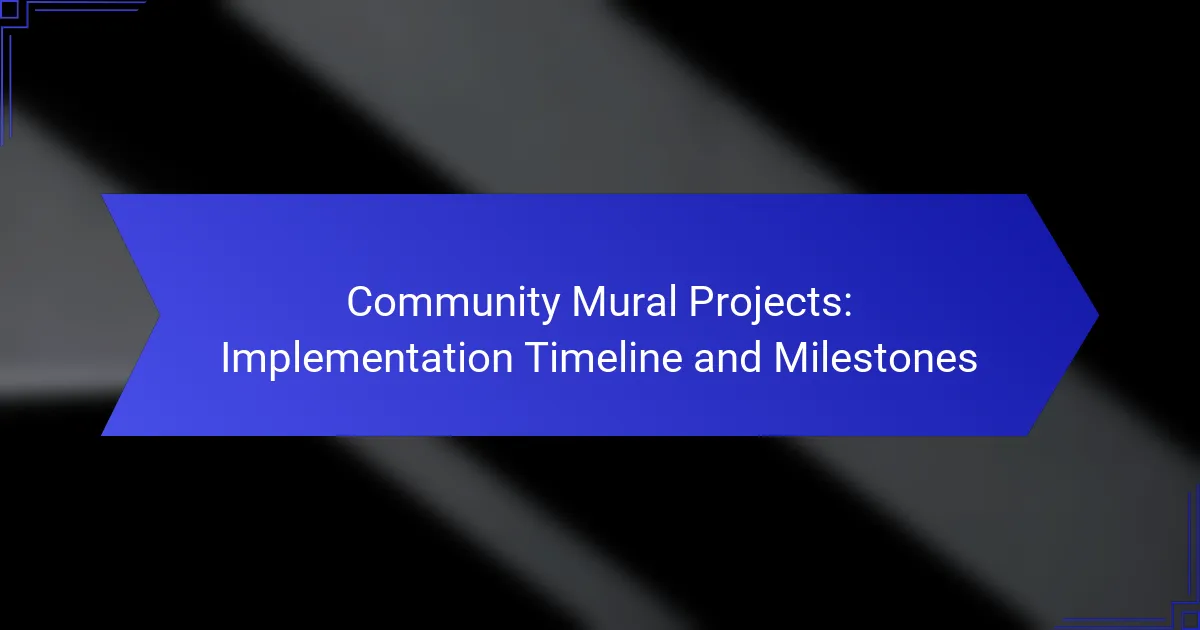Community mural projects thrive on the active participation of local residents, making their input essential for creating artwork that truly represents the community’s identity and values. By engaging community members throughout the planning and execution phases, these projects foster a sense of ownership and pride, ensuring that the final design resonates with the collective vision of the neighborhood.
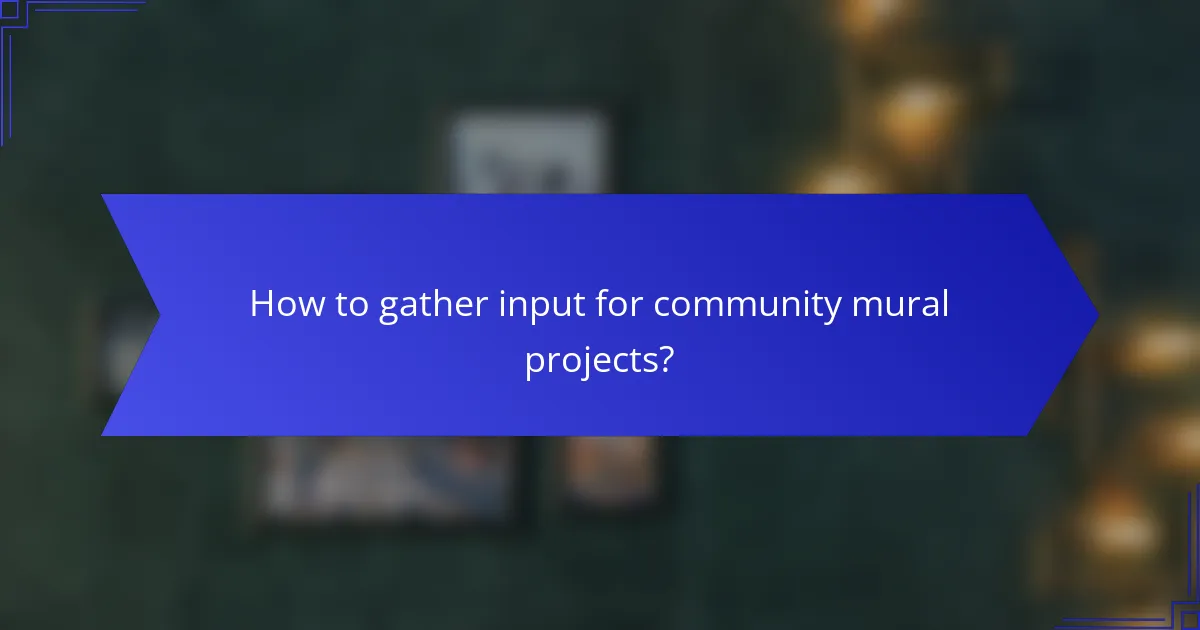
How to gather input for community mural projects?
Gathering input for community mural projects involves actively soliciting feedback and ideas from local residents. This ensures that the mural reflects the community’s identity and values, fostering a sense of ownership and pride.
Surveys and questionnaires
Surveys and questionnaires are effective tools for collecting structured feedback from community members. They can be distributed online or in person, allowing participants to express their preferences regarding themes, colors, and styles for the mural.
Consider using a mix of multiple-choice questions and open-ended responses to capture both quantitative and qualitative data. Aim for a response rate of at least 20-30% to ensure diverse input.
Community workshops
Community workshops provide an interactive setting for residents to brainstorm ideas and collaborate on mural concepts. These sessions can include activities like sketching, group discussions, and presentations of initial designs.
Facilitating a workshop can help build relationships among participants and encourage more in-depth feedback. Limit the group size to around 15-20 people to ensure everyone has a chance to contribute meaningfully.
Online feedback platforms
Online feedback platforms allow for broader participation, especially from those unable to attend in-person events. Websites or apps can be used to gather opinions on proposed designs and themes, making it easy for residents to engage at their convenience.
Utilize tools like Google Forms or specialized platforms designed for community engagement. Promote the online feedback opportunity through local newsletters and community boards to maximize reach.
Social media engagement
Social media engagement is a powerful way to connect with the community and gather input for mural projects. Platforms like Facebook, Instagram, and Twitter can be used to share design concepts and solicit feedback through polls and comments.
Encourage community members to share their thoughts and ideas by creating dedicated hashtags or posts. Regularly update followers on the project’s progress to maintain interest and involvement.
Public meetings
Public meetings offer a formal avenue for community members to voice their opinions and concerns regarding mural projects. These gatherings can be held in community centers or local venues, providing a space for open dialogue.
Ensure that meetings are well-publicized and accessible to all residents. Consider providing refreshments and materials to encourage attendance, and allow ample time for discussion and Q&A to foster a collaborative atmosphere.
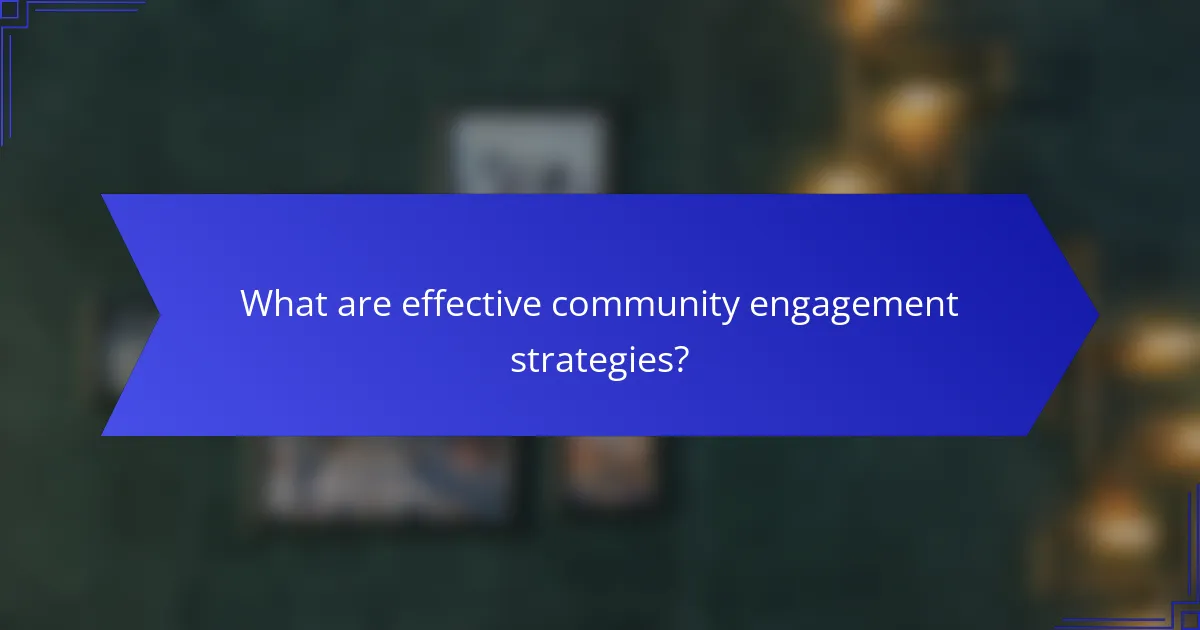
What are effective community engagement strategies?
Effective community engagement strategies involve actively involving community members in the planning and execution of mural projects. These strategies ensure that the artwork reflects the community’s identity and values while fostering a sense of ownership and pride.
Collaborative design sessions
Collaborative design sessions bring together community members to brainstorm and create mural concepts. These sessions can be structured workshops where participants share ideas, sketches, and themes that resonate with their experiences and cultural backgrounds.
To maximize participation, consider hosting these sessions at accessible locations and times, such as community centers or local parks. Providing materials like markers and large paper can help participants visualize their ideas effectively.
Partnerships with local artists
Partnering with local artists can enhance community engagement by bridging artistic expertise with local insights. Artists can facilitate workshops, guiding community members through the design process while ensuring that the final mural aligns with artistic standards.
When selecting artists, prioritize those who have a connection to the community or a strong understanding of its culture. This relationship can foster trust and encourage more residents to participate in the project.
Interactive art installations
Interactive art installations allow community members to engage with the mural process in a hands-on way. This could involve elements like paint-by-number sections or areas where people can contribute their own designs or messages.
These installations can be set up during community events or festivals, making it easier for people to participate. Ensure that all materials used are safe and suitable for public interaction, promoting a welcoming atmosphere.
Neighborhood canvassing
Neighborhood canvassing involves reaching out directly to residents to gather input on mural themes and designs. This can be done through door-to-door visits, surveys, or community meetings, allowing for diverse voices to be heard.
When canvassing, consider using simple questionnaires that ask about preferred themes or colors. Offering small incentives, like refreshments or community recognition, can encourage participation and make residents feel valued in the process.
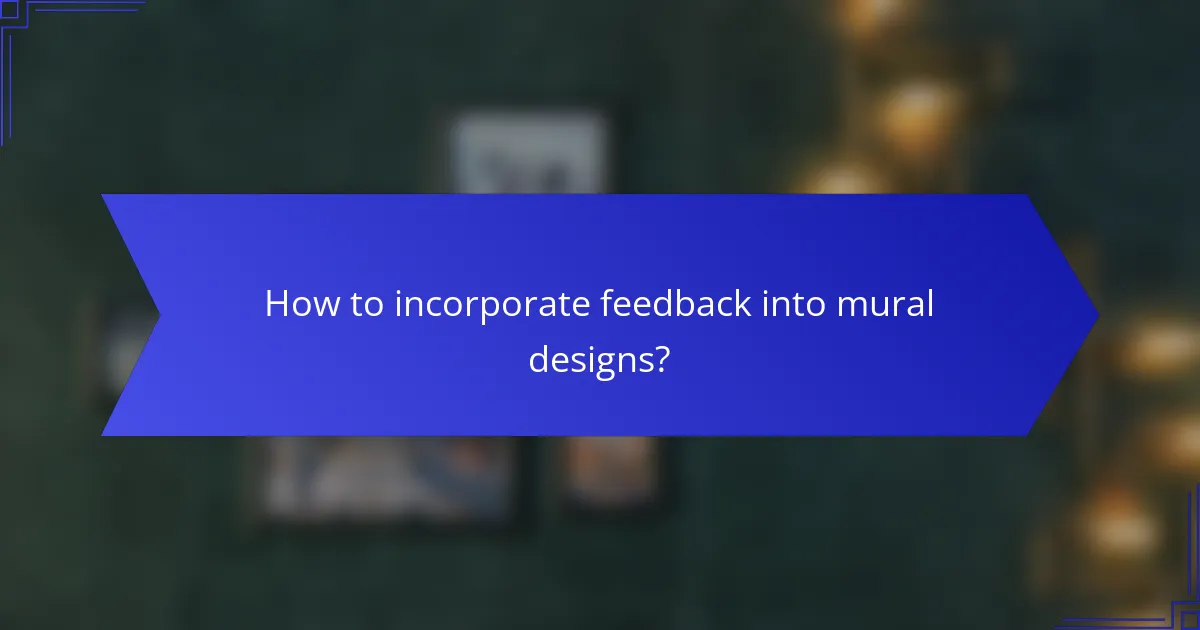
How to incorporate feedback into mural designs?
Incorporating feedback into mural designs involves actively gathering community input and using it to shape the final artwork. This process ensures that the mural reflects the values and preferences of the community it serves.
Feedback analysis methods
Effective feedback analysis methods include surveys, focus groups, and public forums. Surveys can be distributed online or in person, allowing participants to express their thoughts on design concepts and themes.
Focus groups provide a more in-depth discussion, enabling participants to elaborate on their opinions and suggest improvements. Public forums create an open space for dialogue, where community members can voice their ideas and concerns directly.
Iterative design processes
Iterative design processes involve creating multiple design drafts based on community feedback and refining them through successive rounds of input. This approach allows artists to adapt their designs to better meet community expectations.
Each iteration can be presented to the community for further feedback, ensuring that the final mural resonates with local sentiments. This cycle of design and feedback can be repeated several times, typically ranging from two to five iterations, depending on the complexity of the project.
Community voting systems
Community voting systems empower local residents to choose their preferred mural designs. This can be done through online polls, paper ballots, or public exhibitions where participants can cast their votes.
Voting not only increases community engagement but also fosters a sense of ownership over the mural. It’s important to ensure that the voting process is accessible to all community members, potentially offering options in multiple languages or formats to accommodate diverse populations.
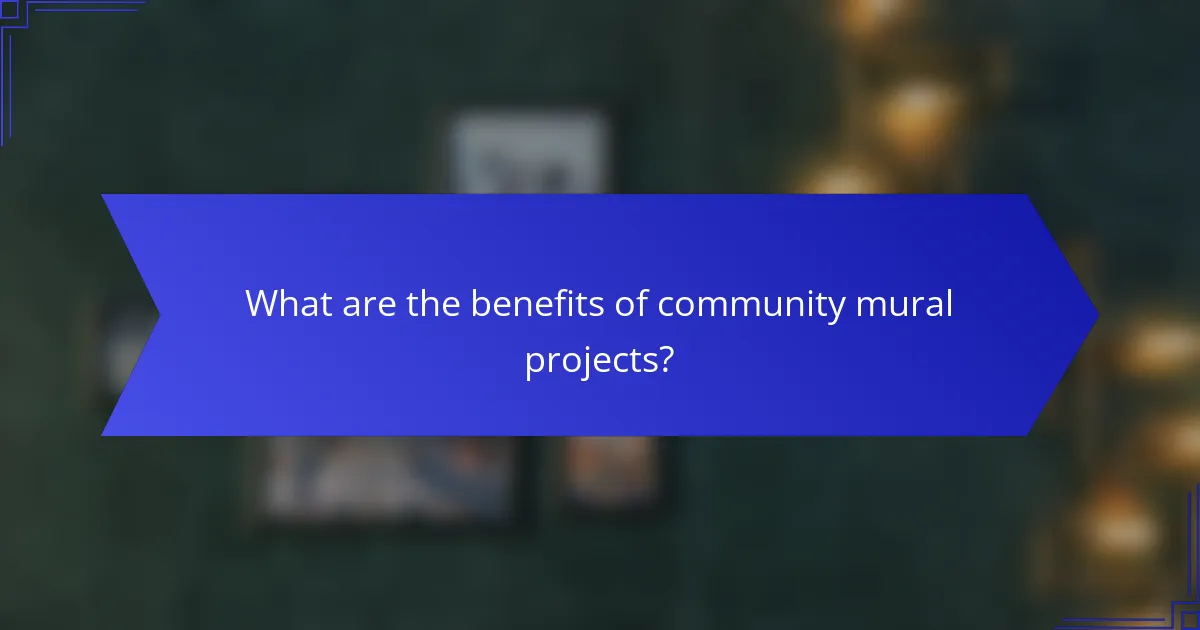
What are the benefits of community mural projects?
Community mural projects offer numerous benefits, including fostering a sense of belonging, enhancing local culture, and promoting collaboration among residents. These initiatives can transform public spaces, making them more inviting and reflective of the community’s identity.
Enhanced community identity
Community mural projects significantly contribute to enhanced community identity by visually representing local history, culture, and values. They serve as a canvas for residents to express their unique stories and perspectives, creating a sense of pride and ownership.
When planning a mural, consider involving local artists and community members in the design process. This collaborative approach ensures that the artwork resonates with the community and reflects its diverse voices.
Increased local engagement
These mural projects can lead to increased local engagement by bringing residents together for a common purpose. Workshops, design meetings, and painting events encourage participation and foster connections among neighbors.
To maximize engagement, promote the project through social media, local events, and community boards. Providing opportunities for feedback and input throughout the process can help maintain enthusiasm and support.
Economic revitalization
Community mural projects can stimulate economic revitalization by attracting visitors and enhancing the appeal of local businesses. Vibrant murals can transform neglected areas into cultural hotspots, encouraging foot traffic and supporting local economies.
Consider collaborating with local businesses to sponsor murals or host events that draw attention to the artwork. This partnership can create a win-win situation, where businesses benefit from increased visibility while contributing to the community’s artistic landscape.

